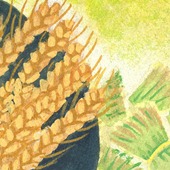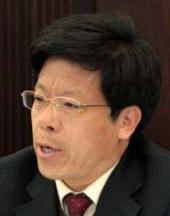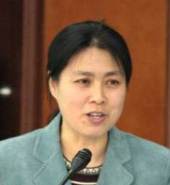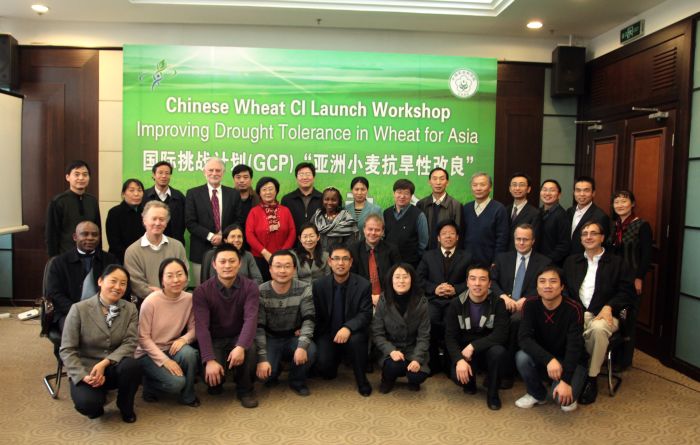Wheat Research Initiative launched in China
- Sunday, 28 February 2010 11:06

E-booklet version, with downloadable PDF
BEIJING, CHINA – Following the India launch, the next stop was Beijing, China, where the wheat RI launch meeting from 25–27 February 2010, was hosted by the Chinese Academy of Agricultural Sciences (CAAS).
Like ICAR in India, CAAS is a founding GCP Consortium member. “China has been a good GCP partner and friend right from the Programme’s beginnings, and the country has an impressive team of scientists,” observed Dr Ribaut. “There’s absolutely no doubt that this good relationship will be strengthened further.”
 In his welcoming remarks, Dr Tang Huajan (pictured left), Vice-President, CAAS, observed that the launch meeting was in the festive season of the Chinese new year. “This is the Year of the Tiger, so there are indeed even stronger collaborations ahead,” he said.
In his welcoming remarks, Dr Tang Huajan (pictured left), Vice-President, CAAS, observed that the launch meeting was in the festive season of the Chinese new year. “This is the Year of the Tiger, so there are indeed even stronger collaborations ahead,” he said.
Food first
With a population of 1.4 billion projected to rise to 1.6 billion within the next two decades, providing adequate quality food to the population is very high on China’s agenda. Noting that CAAS is keenly pursuing international collaborations in agriculture, Dr Tang said CAAS has memoranda of understanding (MoUs) with most of the CGIAR Centres and hosts seven on its campus. A vast number of Chinese scientists have also been trained at and by CG Centres, and this has greatly benefited the country. For instance, as the first step in this new project, researchers in the Chinese wheat RI underwent training in phenotyping in late 2009 at CIMMYT. The next step will be for the trainees to formulate phenotyping protocols, by adapting those already designed by the wheat RI team in India.
China and GCP are also united by another common priority: “Drought affects many crops in China,” said Dr Tang (pictured left). Southwest China is currently afflicted by drought, affecting a population of 15m people. In Northern China which is a maize- and wheat-growing area, drought is a problem. Drought-tolerant crops are therefore important to guarantee productivity and also improve quality.” He added that China was pleased to join hands with international partners to address productivity under drought.
The purpose of the meeting was to share experiences and report on progress in solving the problems that will lead to better varieties to improve wheat production.
 In his opening remarks, Dr Wang Shumin (pictured right) Deputy Director General of the Institute of Crop Science, CAAS, revealed that 60 percent of the institute’s scientists work on wheat. This, he said, reflects the importance of wheat in China, and further underscores why research on wheat water-use efficiency and drought tolerance is a priority. He also observed that collaboration with CGIAR institutes had increased as a result of engagement with GCP, citing ICARDA as an example.
In his opening remarks, Dr Wang Shumin (pictured right) Deputy Director General of the Institute of Crop Science, CAAS, revealed that 60 percent of the institute’s scientists work on wheat. This, he said, reflects the importance of wheat in China, and further underscores why research on wheat water-use efficiency and drought tolerance is a priority. He also observed that collaboration with CGIAR institutes had increased as a result of engagement with GCP, citing ICARDA as an example.
Walking the talk – China leads
In Phase I, GCP’s interaction with China was more limited and at micro or project level, mostly on germplasm characterisation and exchange, and with project leadership by the CGIAR and developed-country partners. Phase II will be focused on broader, macro, large-impact issues, and will also see a fundamental shift in partner roles. “We want developing countries to take the lead in Phase II, with the CGIAR Centres and partners in developed countries supporting the work as mentors,” said Dr Ribaut.
 The Chinese wheat RI is led by Dr Ruilian Jing (pictured left) of CAAS. All in all, six institutes are working on this initiative. Four are in China: CAAS (incorporating the Institute of Crop Science and National Key Facility for Crop Gene Resources and Genetic Improvement), the Hebei Academy of Agricultural Sciences (HAAS), Shanxi Academy of Agricultural Sciences (SAAS) and the Xinjiang Academy of Agricultural Sciences (XAAS), with the Plant Breeding Institute of the University of Sydney, Australia and CIMMYT in a mentoring and support role. CAAS is also investing both funds and in-kind contributions to this initiative. Several postgraduate students who will be working on the project also attended the meeting. Altogether, CAAS has about 3,000 postgraduate students.
The Chinese wheat RI is led by Dr Ruilian Jing (pictured left) of CAAS. All in all, six institutes are working on this initiative. Four are in China: CAAS (incorporating the Institute of Crop Science and National Key Facility for Crop Gene Resources and Genetic Improvement), the Hebei Academy of Agricultural Sciences (HAAS), Shanxi Academy of Agricultural Sciences (SAAS) and the Xinjiang Academy of Agricultural Sciences (XAAS), with the Plant Breeding Institute of the University of Sydney, Australia and CIMMYT in a mentoring and support role. CAAS is also investing both funds and in-kind contributions to this initiative. Several postgraduate students who will be working on the project also attended the meeting. Altogether, CAAS has about 3,000 postgraduate students.
At the close of the meeting, Dr Carmen de Vicente, GCP’s Leader for Capacity building and enabling delivery, expressed GCP’s confidence in the Chinese team: “This is the right project, in the right place with the right people. The project is in good hands. It is particularly encouraging to see the strong institutional support from the Chinese government.” The team includes several distinguished scientists who in December 2009 received the National Science and Technology Progress Award from the Chinese government in recognition of their work on germplasm enhancement, breeding and application of winter wheat with drought resistance and high water-use efficiency in northern China. The award was to – among others – Ruilian Jing, Meirong Sun, Xiumin Chen and Pingxiao Chang.
Dr de Vicente stressed GCP’s role as a project partner, and not simply a funder, “We are committed to see this project succeed, and GCP will provide all the necessary technical backstopping, support, tools and guidance.”
Bringing the 'Top Two' together and banking in the future
Reiterating the importance of the wheat in Asia Research Initiative, Dr Ribaut noted that the wheat RI was the flagship of GCP’s RI approach, given the population in India and China, the capacity and infrastructure in both nations, and therefore the great impact the work would have, especially with the ‘Big Two’ in Asia working together as envisioned for the project. However, he was quick to add that GCP’s RI approach is not about large impacts in the short term. Rather, what GCP hopes to demonstrate is definitive proof-of-concept of the power of molecular breeding to increase crop productivity, thereby improving food security. Other agencies can then upscale and outscale the proven concept at the national, or even at the regional level.
In his concluding remarks, Dr Ribaut stressed the critical importance of germplasm exchange and good data management, and reminded participants to use the IBP, whose clients will include all the seven RIs. “This is your platform,” he emphasised. The project’s genotyping and data management components will be conducted through the IBP.
"...Go!"
The project timelines and milestones will be adjusted based on consultations during the launch meetings. “Now we all know and understand what we need to do. Let’s go out and do it!” concluded Dr Trethowan.

Participants at the China wheat RI launch meeting:
Back row (from left to right): Chai Yongfeng, Li Xiurong, Chen Xinmin, Larry Bulter, Qiao Wenchen, Chen Xiumin, Li Kejiang, Antonia Okono, Jing Ruilian, He Zhonghu, Sun Meirong, Wu Zhenlu, Han Nanping, Mao xinguo, Zhang Yueqiang and Chang Xiaoping
Middle row (from left to right): Francis Ogbonnaya, Peter Langridge, Carmen de Vicente, Feng Dongxin, Jean-Marcel Ribaut, Wang Shumin, Xavier Delannay and Richard Trethowan
Front row (from left to right): Zhang Junling, Li Ang, Shi Wei, Wang Zhenghang, Wang Zhilan, Liu Xiulin and Chang Jianzhong
For more information, see:
